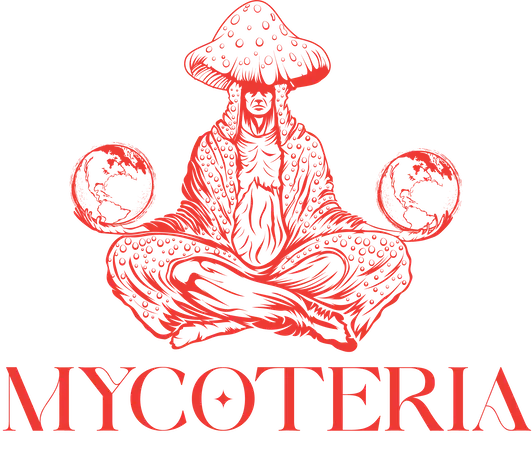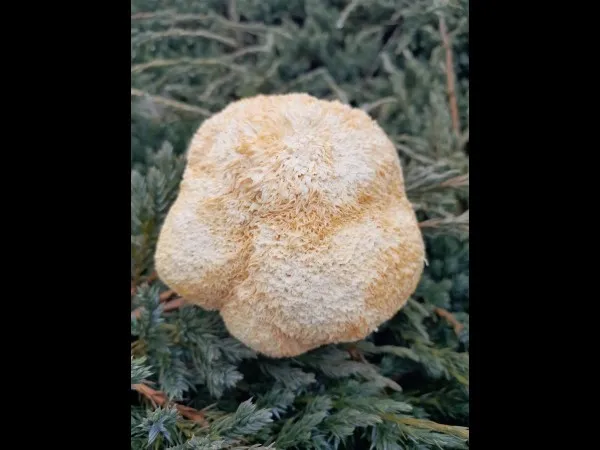- today

Lion’s Mane (Hericium erinaceus) is a cream-colored pom-pom-shaped mushroom that gets its name from the fluff-like tendrils that look like a Lion's Mane. Nowadays Lion’s Mane mushroom is one of the most popular functional mushrooms and nootropics used for its great benefits.
Growing Lion's Mane mushrooms means the process of cultivating Lion's Mane mushrooms (Hericium erinaceus). This process involves several key steps and is a methodical process that requires careful attention to conditions such as temperature, humidity, and cleanliness. The goal is to produce healthy, high-quality mushrooms for culinary, medicinal, or other uses.
How to grow Lion’s Mane indoors step-by-step
Unfortunately, you’re not likely to find fresh Lion’s Mane at your local grocery store, so having a supply of your own will keep you enjoying Lion’s Mane all year round. The method for growing your own Lion's Mane is almost the same as for other fungi types. This cultivation method allows for year-round production of the mushroom for both culinary and medicinal purposes.
Growing Lion's Mane can take several weeks from the first step to the last, but the process is satisfying and results in fresh, homegrown mushrooms. Here’s a step-by-step guide on how to grow a Lion’s Mane at home.
STEP 1: Preparing your supplies and growing area
Recommended supplies needed for Lion’s Mane growing are listed below:
- Pressure cooker
- Kitchen scales
- Measuring cups
- Lion’s Mane grain spawn
- Mushroom-growing bags or buckets
- Hardwood pellets
- Soy hulls
Maintaining a clean and sterile work environment during the inoculation process is essential in order not to introduce a competitive bacteria into your substrate that could outcompete your spawn. Therefore, before starting, thoroughly sanitize your workspace with an appropriate cleaning solution. Once your workspace is sanitized, gather all the necessary equipment and supplies.
It is recommended to begin the process of Lion’s Mane growing of substrate preparation, inoculation, and incubation within a mushroom growing bag. This simplifies handling sterilization and pasteurization.
After that, the growing technique becomes a matter of personal preference. Some cultivators prefer to keep their Lion's Mane growing in bags, while others choose jars or fruiting chambers.
The primary considerations are successful inoculation and colonization of the substrate and ensuring the growing environment has sufficient humidity.
STEP 2: Preparing your mushroom substrate
Properly preparing your mushroom substrate is a crucial step in the mushroom cultivation process. This is the stage where bacteria or competing organisms may be introduced. It is especially relevant for Lion's Mane mushrooms, as they take longer to develop compared to other mushrooms. This longer development period increases the risk of contamination.
Various types of substrates can be used to grow Lion's Mane mushrooms, including supplemented ones. A quality substrate should provide the nutrients and hydration your mushrooms need to flourish. Starting with a solid foundation is essential for success.
STEP 3: Inoculating mushroom substrate
Before beginning, wash your hands thoroughly with soap and water. Sanitize your workspace before opening the growing bag. For optimal results, carry out the inoculation in a controlled, decontaminated area, such as a flow hood or a sterilized clear box with built-in gloves.
For a 2.3 kg substrate, it is recommended to use 200 grams of grain spawn mix. When using grain spawn, gently break it apart and mix it evenly throughout the substrate mix, ensuring uniform distribution. An effective method is to open the bag, quickly add the spawn, seal the bag immediately, and then mix the contents within the sealed bag. Ideally, this process should be done in front of a flow hood to minimize exposure time.
Once the Lion’s Mane spawn is mixed into the substrate, seal your growing bag or cover your container.
STEP 4: Incubating your mushrooms
After your substrate is prepared and inoculated, allow the Lion’s Mane fungi to begin its growth.
Store the growing bag in a dark space away from direct sunlight and maintain a room temperature of 18-25°C, ideally around 23°C. This will create the optimal environment for incubation.
How to promote fruiting for your Lion’s Mane?
To support your Lion’s Mane mushrooms in fruiting, create conditions that enhance growth.
- Increase humidity. Maintain the growing bag in a shady area and mist the substrate multiple times a day.
- Create a humid environment. Place the growing bag in a plastic liner and spray the inside for increased humidity. Alternatively, use wet tissue paper or cloth inside the outer lining.
- Adjust bag openings. Cut a small hole (5 cm) on the side of the bag rather than the top to control moisture and promote larger mushroom clusters. Use one hole per 750 grams of substrate. Fold and tape down the bag top to prevent mushrooms from growing there.
When to harvest Lion’s Mane?
Harvesting can take place at any point during the growing cycle, but you can typically tell the mushroom has completed its growth cycle when it forms tendrils at the bottom measuring 3-5 cm in length. Aim to harvest your mushroom after tendrils start to form but before it begins releasing spores. If you spot white powder inside your humidity tent, the mushroom has started to sporulate.
How long does Lion’s Mane take to grow?
Lion's Mane mushrooms generally take several weeks to grow, from inoculation to harvest. The growth timeline can vary depending on the cultivation methods and environmental conditions such as temperature, humidity, and light. Here is a general overview of the timeline:
- Incubation Period. After inoculation, it takes about 2 to 3 weeks for the mycelium to fully colonize the substrate. During this period, the substrate should be kept in a dark, warm, and humid environment.
- Fruiting Stage. Once the substrate is fully colonized, you can move it to a fruiting environment with higher humidity and indirect light. This stage usually lasts about 1 to 2 weeks.
- Harvesting. Lion's Mane mushrooms are typically ready for harvest once the spines have fully extended and the mushroom is fresh and white. The timing can vary, but it usually takes around 1 week from the start of fruiting for the mushrooms to be ready.
In total, the process from inoculation to harvest can take around 3 to 6 weeks. The key to successful cultivation is maintaining optimal growing conditions throughout the process.
Is Lion's Mane mushroom easy to grow?
Lion's Mane is a relatively easy mushroom to cultivate, but it can be challenging for beginners as the mycelium takes longer to develop than other mushrooms. First-time growers might additionally discover it hard to determine if the Lion's Mane is fully colonized and ready to deliver fruit. If you're unfamiliar with mushroom growing, you seek some hands-on experience initially.
Lion’s Mane - Legality
The mysterious mushroom of Lion’s Mane is perfectly legal everywhere in the world. This means you can purchase it without any concerns about legal restrictions or regulations. Whether you are interested in exploring its culinary uses, seeking its reputed cognitive or immune system benefits, or simply drawn to its striking visual appeal, you can acquire Lion's Mane mushroom with peace of mind.
How to grow Lion’s Mane mushrooms on logs?
Growing Lion's Mane on logs is an economical way to maintain a long-term supply of fresh mushrooms. You'll need Lion's Mane plug spawn, hardwood logs (2-6 weeks old), a hammer, a drill with an 8mm bit, wax, and a wax applicator. Here’s how the process should go:
- Preparing supplies and growing space. Keep the growing area clean to avoid contamination. Use hardwood logs like beech or oak, ensuring they are from healthy trees and not older than 6 weeks. Drill rows of 15 cm holes along the length of the log, staggering them in a checkerboard pattern.
- Inoculating logs. Insert plug spawn dowels into the holes and tap them in with a hammer. Seal the holes with melted wax (soy, cheese, or beeswax), using a wax applicator, cotton ball, or brush.
- Incubating Lion's Mane mushrooms. Once logs are inoculated and sealed, incubate them in shaded areas with good air circulation and high humidity. Keep logs moist by watering for 10 minutes once or twice a week in dry weather.
- Helping Lion's Mane to fruit. To accelerate mushroom growth, soak the logs in cold water for 12-24 hours to shock them. Wait at least a year before shocking to ensure the mycelium has colonized the logs. This method speeds up growth and helps mushrooms fruit sooner.
What to avoid when growing Lion's Mane indoors?
When growing Lion's Mane mushrooms indoors, avoid the following pitfalls:
- Poor sanitation
- Improper temperature and humidity
- Lack of air circulation
- Inconsistent lighting
- Over-watering or under-watering
Where does Lion's Mane grow in nature?
The mushroom tends to grow on tree trunks, stumps, and fallen branches, where it helps decompose the wood and recycle nutrients back into the soil. Lion's Mane mushroom is commonly found growing on decaying wood, especially on oak, beech, walnut, maple, sycamore trees, and other broadleaf trees.
In the wild, you’re more likely to find this mushroom on rotting trees throughout North America, Canada, Europe, and Asia in late summer and fall.





